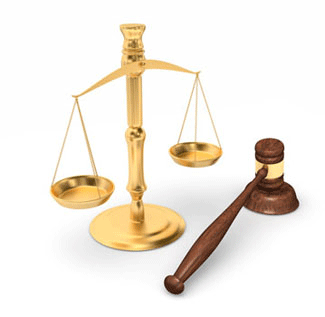
Studies Questions A Talc And Ovarian Cancer Link
Johnson & Johnson has produced an entire website to defend the safety of the talc they use in Johnson's Baby Powder and other cosmetic products
Thursday, August 23, 2018 - Johnson & Johnson continues to proclaim that talc is safe contrary to the billions of dollars that have been awarded to plaintiffs suing them alleging that asbestos in Johnson's Baby Powder talc caused their cancers. Johnson & Johnson points to several studies to support their claims of talc's safety.
The first is the Nurses' Health Study (NHS) the largest women's health study in history, funded independently by the US government. According to Johnson and Johnson, the study found no connection between cancer, talc, and asbestos. According to the website http://www.factsabouttalc.com, "The study data showed no increase in the overall rate of ovarian cancer among the talc users, regardless of how often they used talc. There was no difference in the rate of ovarian cancer among women who used the powder directly on their bodies or on sanitary products."
Another study is also cited as demonstrating the safety of talc. Johnson & Johnson quote the expert opinion of the National Cancer Institute's Physician Data Query Editorial Board, which in April 2017 wrote, "The weight of evidence does not support an association between perineal talc exposure and an increased risk of ovarian cancer. No government health authority has concluded that talc can cause ovarian cancer."
A third scientific study that Johnson & Johnson claims to support the safety of talc is the Women's Health Initiative Study. Approximately 30,000 women that used powder on their genitals, sanitary napkins or diaphragms were included. The study found "no increased risk of ovarian cancer in women who used talcum powder, regardless of the type of use. There was also no increase in risk among women who used powder for longer periods of time"
Talc is a substance composed of magnesium, oxygen, and silicon that is used primarily in the cosmetics industry to absorb moisture and for its smooth feel. Talcum powder has been used for decades by millions of women on their babies after each diaper change to absorb moisture and prevent diaper rash. A jury has recently determined that Johnson's Baby Powder contains asbestos, a known and deadly carcinogenic, and people are asking the question "Is Johnson's Baby Powder safe to use?" There is a growing body of evidence being presented by scientists and researchers that the answer to that question is a resounding no.
Talc is mined in close proximity, sometimes adjacent to asbestos mines in China, Italy and in Vermont in the United States and cross-contamination has been proven to happen. Once contaminated it is impossible to remove asbestos from talc.
If talc is in fact contaminated with asbestos, Johnson's Baby Powder may be the least of a woman's problems. Literally thousands of other products, some of which we have all used for our entire lives, also are talc-based. Most of the cosmetic products such as eyeliner, mascara, and makeup that women use are "talc based." Most antiperspirants are made from or contain talc. Sanitary napkins are laced with talc as well. Talcum powder cancer lawsuits allege that Johnson & Johnson was aware of the studies linking baby powder to ovarian cancer, yet chose not to warn consumers of the heightened risk.
